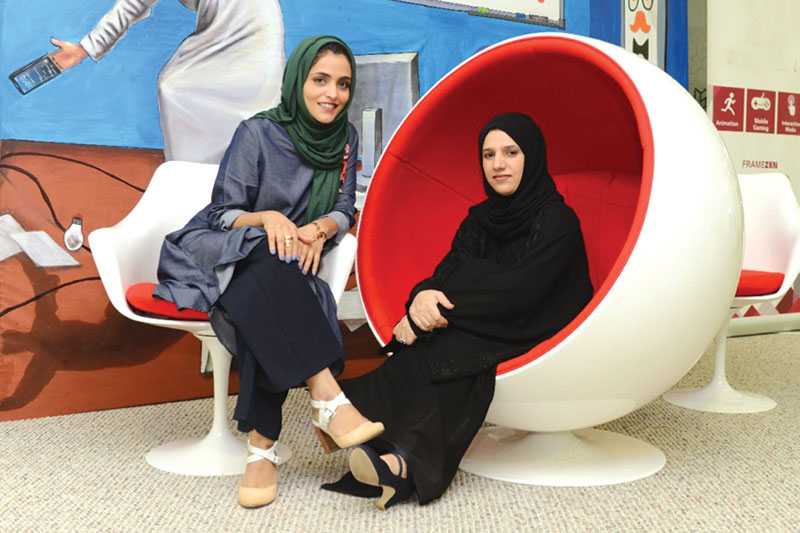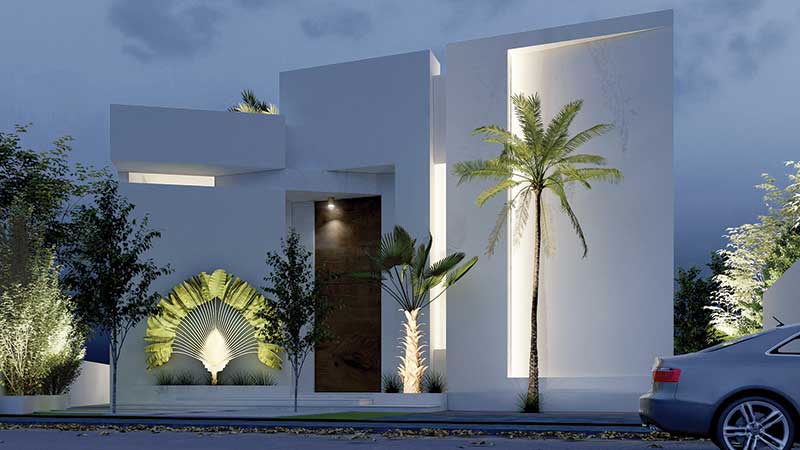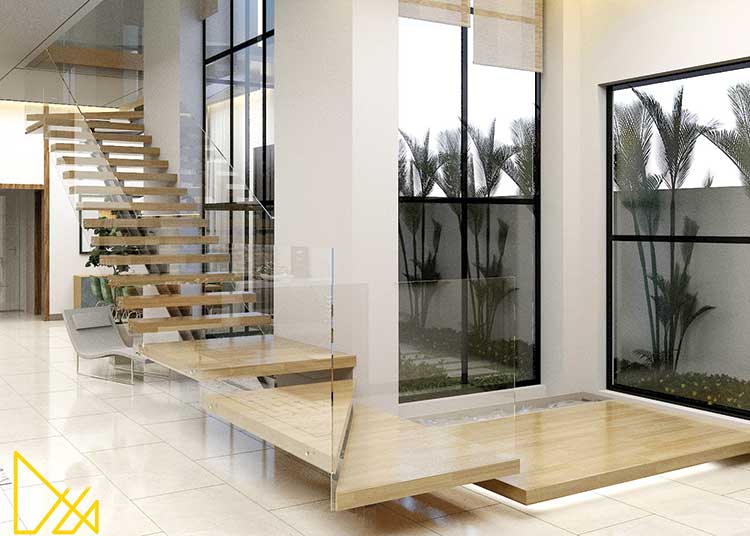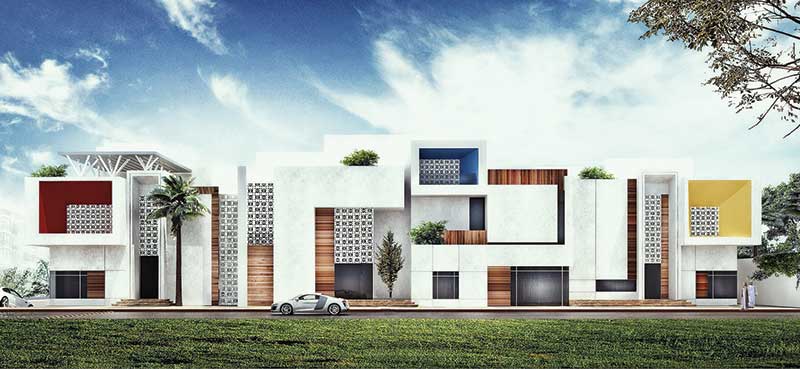Co-founders of Mashhad Oman, Khalsa AlRawahi and Huda AlJahwari continue to to serve their clients with comprehensive designing and building of functional and inspiring structures. Know more about them here…
Khalsa Khalfan Sulaiman AlRawahi was born in Muscat and raised in a small village called Hibra. In 2008, she graduated from Sultan Qaboos University as an architect engineer, after which she worked as in private and government sectors and trained in Dubai in an international German construction company.
All through her early career, Khalsa was drawn to the conceptual approach of architecture and art. In 2008, she joined the Photography society, under the Omani Society for Fine Arts. She learned how to use her first pro camera and found that her forte was conceptual and surreal photography; deeply moved by the work of Misha Gordin, which has continued to inspire her even to this day. She also practiced landscape and architecture photography, which resulted in her first self-published book ‘Charm of Simplicity’ – a photography book about Nakhal Fort. While she serves as the Business and Creative Design Lead at Mashhad Oman, an architectural consultancy; during her free time she loves to play with neglected, old furniture by transforming it into beautiful pieces.

Growing up in the small village of Al Mabrah in Al Suwaiq, as a little girl, Huda Abdulla AlJahwari always enjoyed building models with her friends from the raw materials which were available in their farms – stones, wood, trees leaves or cartons. That’s what shaped her interest in the field and this led her to learn more about buildings and architecture in high school. Since then she harboured a dream to be an architect.
Having graduated from Sultan Qaboos University in 2008 as part of the first architectural cohort, she took up a job at the Wave Muscat, where she learned a lot about site inspection, site implementation and the construction process. She then moved on to another consultancy where she discovered her interest in the designing process. Excited to take on a new role, she joined a bigger organisation with a bigger team and larger projects; experience that taught her a lot. With over 11 years of experience in the architecture industry, the mother of three went on to set up Mashhad Oman in the capacity of co-founder along with Khalsa.
Their experience has taught them well and they continue to steer Mashhad Oman with a vision and mission to serve their clients in the comprehensive designing and building of functional and inspiring structures. Below are excerpts from the interview…
How did Mashhad Oman come to be?
Khalsa: Any ambitious architect will think of having his/her own office to translate thoughts into design…this is what happened to me and Huda. I went to Huda and told her why don’t we support each other and be united and she agreed.
Huda: My dream was always to have my own office, so I was always looking for this opportunity everywhere I went, until I met my old friend Khalsa who shared the same dream. When we decided to go through it together, Mashhad was born.


What elements define Mashhad Oman’s style of design and architecture?
Khalsa: First and foremost, we are Omanis; we understand the needs of the Omani people; we communicate easily with our customers and we work hard to present and produce the service they really need. Most of our customers notice that the design style we produce has that sense of art that is carefully designed according to their needs.
Huda: Mashhad specialises in creative, innovative, functional, cost effective and minimalist designs.
What are the essential elements that make a good design?
Khalsa: God created us and each creature in proportioned measurements…this is what makes our world beautiful; the beauty is obvious to everyone; good design is well proportioned.
Huda: In my opinion, if the design achieves architectural standards, respects the environment and meets the client’s requirements, it will be a good design.
What challenges have you all experienced in this field of work?
Khalsa: First, limited resources; building and sustaining the team is the most challenging part. Second is managing time, as we wear different hats in our daily work.
Huda: As a mother it is about the balance of home and office work. But the other challenges were from the past, as our society now is open and respects women in any field of work.


What are some design and architecture trends that you are inspired by and wish to see more of in Oman?
Khalsa: I’m inspired by minimalist architecture.
Huda: I agree. I’m inspired by minimalist designs with less noise and more light, and contemporary indoor-outdoor homes. And off course courtyard homes, which I wish to see more of in Oman.
At Mashhad Oman, how do you all balance trends and personal style when designing a structure/space?
Khalsa: It is a constant endeavour to balance both trends and personal style! There is no specific way; I’m just always reminding myself to do so.
Huda: Sometimes, it’s about the client, as we respect his/her needs, views and budgets. But we always try to educate our clients about new trends and styles and how to implement them in the best way within the budget.
Do you see Oman’s market adopting sustainability in design and architecture?
Khalsa: Not really, but there is a plan and a move towards it…
Huda: Our old traditional Omani residences reflected sustainability with their materials, orientation, and ventilation elements, but the current houses have lost those aspects. In my opinion we are still beginners in this field and we have very few examples of sustainable buildings in Oman.
How does Mashhad Oman make sure that your structures/designs are sustainable and environment friendly?
Khalsa: Apart from making sure that we meet the requirements of our clients, we also do site analysis and study the best materials that suit the site.
Huda: We study the site and the sun movement for best house orientation, and we also try to propose local materials (or at least the ones which are available in the country); we try to convince the client to go with solar panels and double glazing windows to minimise the heat inside the house, which will in turn minimise the usage of energy.


What should our readers pay attention to when having their spaces designed?
Khalsa: I advise homeowners to plan a clear budget; they need our help in managing that budget so they can spend it wisely. They need to focus and invest in basic interior design such as lighting and material selections. For retailers and real estate firms, I advise them to invest in concept planning and give it a unique approach.
Huda: I think they need to invest more during the design process, and not only in the construction phases; and to give the designer the freedom to be creative and innovative, because a successful design will lead to a successful project.
What are your plans and hopes for the future of Mashhad Oman?
Khalsa: For the near future, we wish to be one of the leading architectural and interior design consultancies in Oman and to make a real influence in the society and people’s lifestyle.
Huda: Our aim is to be named among the ‘Best Emerging Omani Architectural Firms’ for our new creative designs; tech-smart architecture and quality design management. We also hope to grow our team and to do much bigger projects.
What is your message to aspiring architects and interior designers?
Khalsa: Work hard on yourself and observe as the world changes!
Huda: Continue educating yourself about the latest developments and innovations. Travel to well-designed cities to enrich your imagination. And know what your passion as an architect is and follow it.


Great article and useful info Mashhad Oman